Should the Blue Jays Consider Replacing GM Ross Atkins?

With the signing of manager John Schneider to a three-year deal contract, plus a team option for a fourth year, the Toronto Blue Jays leadership is now secured in place through the 2026 season. Team president and CEO Mark Shapiro and general manager Ross Atkins had previously signed five-year extensions through 2026 last year.
As predicted back in 2021, Schneider is now Atkins’ third manager in his seven years at the helm of the baseball operations since taking over in November of 2015. John Gibbons was retained as the incumbent manager when Atkins was hired by Shapiro and helped run the team back to the 2016 ALCS. Their record from 2016-18 under Gibby was 238-248 (.490).
Charlie Montoyo was hired ahead of the 2019 season and put up a 236-236 (.500) record before his firing on July 13th earlier this season, after a disastrous 1-6 west coast road trip. Schneider then led the team to a 46-28 record (.622), and the top Wild Card seeding.
That puts the Jays’ record under the current front office at 520-512 (.504). That stretch includes two 2nd place finishes, one 3rd place, and four 4th place finishes in the AL East, plus three postseason appearances. Unfortunately, the Jays have lost eight of their last nine playoff games, and haven’t advanced past the Wild Card round since 2016.
Should the Blue Jays consider replacing general manager Ross Atkins?
Of course that includes a full teardown and rebuilding by the 2019 season, when the team lost 95 games and finished 36.0 games out of first place in the AL East. It also includes the bizarre 2020 pandemic season, and a vagabond-like existence in 2021, when the Blue Jays called three ballparks “home” in Dunedin, Buffalo, and finally back to Rogers Centre in Toronto.
The Jays have just put up back-to-back 90+ win seasons, and they were the top AL Wild Card seed in 2022, with 92 wins and a +96 run differential. John Schneider had them playing at a 101-win pace after taking over from Montoyo, and let’s not forget the team was ahead 8-1 in the 6th inning of game two of the Wild Card series earlier this month against Seattle, with a 99% chance of winning that game. Even entering the eighth inning, FanGraphs noted that,
A four-run lead as the home team entering the top half of the eighth represents a 96.9% win probability, because teams realistically do not make up that large of a deficit in such a limited number of opportunities.
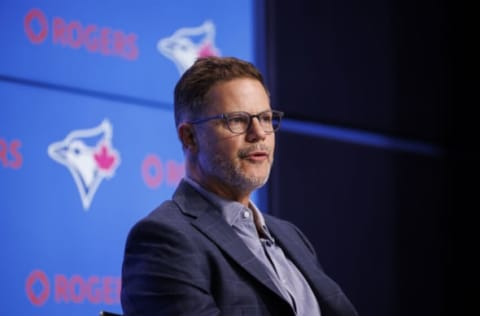
Should GM Ross Atkins Be Fired?
So it might sound odd to be asking if GM Ross Atkins should be fired. Obviously, he won’t be fired by team president Mark Shapiro this offseason, and he’s potentially here through 2026. But is there a case to be made that the Jays need to upgrade their front office for the GM position?
Atkins is now certainly on the clock in terms of being next on the firing line should the Blue Jays regress in 2023. He’s certainly failed to build the club for postseason success since inheriting the 2016 ALCS team, where the top ten players by WAR were acquired by his predecessors, Alex Anthopoulos andTony LaCava.
And he was hired to replace the Canadian-born Anthopoulos, who has been affiliated with postseason clubs every year since the Jays 2015 ALCS team and who continues to build a potential Hall of Fame resume as the president and GM of the Atlanta Braves, winners of the 2021 World Series and five consecutive NL East pennants since he arrived.
According to Anthopoulos, there may have been some issues that led to his departure from Toronto despite a contract extension offer. When he was hired in Atlanta after the 2017 season, he spoke with Jeff Blair and Stephen Brunt on Sportsnet 590 The Fan’s ‘Jeff Blair Show’ and cryptically said,
… you can have the greatest organization in the world, if you’re working for people you don’t enjoy, you don’t believe in them, they don’t believe in you, what environment is that going to be? How rewarding is that going to be?
But what specific issues could be cited should Rogers decide to replace Atkins?
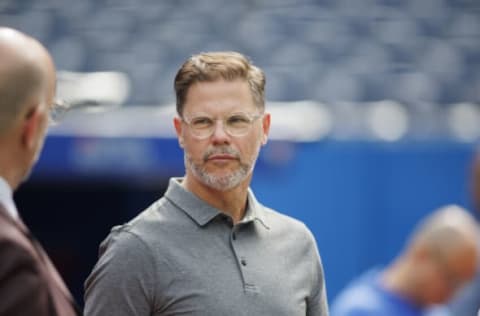
The Bullpen
This has clearly been a big Achilles’ heel of the team during Atkins’ tenure. Despite repeatedly talking about the importance of run prevention, and “swing-and-miss” relievers, the Jays bullpen has ranked 17th in Major League Baseball with a 4.07 ERA and 21st with a 6.2 fWAR since the 2020 season. Given they’ve made the postseason in two of those three years, that’s just not good enough.
Despite having a prolific offence this season (as per FanGraphs, the Jays had “the fifth-lowest strikeout rate in baseball during the regular season, ranked third in slugging, and second only to the Dodgers in team wRC+“), FanGraphs questioned the 2022 bullpen in their ALWC preview, asking:
Is Toronto’s bullpen good enough to make a deep run? Closer Jordan Romano passes the late-inning smell test, and the limber Adam Cimber is an excellent, disorienting “look” reliever. The rest of the bullpen is fine, but not typical of a contending team. Toronto is in the bottom third of baseball in bullpen fastball velocity and contact rate and in the middle of the pack in strikeout rate. The group, as a whole, throws strikes (for all the middling other statistics, they’re top five in bullpen walk rate, and the pitching staff as a whole is third), but the Jays have just one lefty to call on (Tim Mayza) and have leaned heavily on Yimi Garcia, who’s more of a low-leverage middle inning type at this point.
Certainly, a case can be made that the 4th place AL East finish in the 2021 season, despite the team having a +183 run differential, the AL Cy Young winner, and two of the three AL MVP finalists, was due to an awful bullpen in May and June that year when the bullpen lost 14 games and blew nine saves while posting a 4.51 ERA (ranked 20th in MLB over that stretch) and 0.5 fWAR (23rd in MLB).
There was no competitive depth after the planned bullpen of Kirby Yates, David Phelps, Julian Merryweather, Tyler Chatwood, Ryan Borucki and Rafael Dolis was either injured or ineffective. In fact, the only good news to come out of those dark days was that Jordan Romano was finally anointed as the Jays go to Closer.
That lack of depth was the fault of Ross Atkins, who had at least two damning injury reports on Kirby Yates before signing him, yet still went ahead anyway. He then tried to replace the injured relievers with a succession of uncompetitive dumpster dives like Anthony Castro, Jeremy Beasley, Carl Edwards Jr., Tyler Chatwood and Rafael Dolis.
Again in 2022, the bullpen was just average, posting a 3.77 ERA (ranked 13th in MLB), and an fWAR of only 3.0 (16th). Note that all of the remaining teams in the 2022 postseason had top ten bullpens in terms of fWAR.
More damning might be that in his end-of-season remarks, Ross Atkins acknowledged the importance of swing-and-miss arms in the bullpen, and how they needed to be better there to take the next step toward a deep postseason run.
Ross Atkins on the #Bluejays bullpen: "We are aware we need to be one of the best bullpens to be there at the end of the year."
— Rob Longley (@longleysunsport) October 11, 2022
However, words are one thing. Ross Atkins has to be held accountable, with a commitment to resource allocation to add two or three new high-leverage, swing-and-miss arms to the bullpen to upgrade and improve upon what we’ve endured in the past few seasons, including the historic failure of the bullpen in blowing an 8-1 lead in the 6th inning of game two of this year’s ALWC series.

Talent Destruction Via Trades
In a Jays Journal analysis for this article of all trades made by this front office since Mark Shapiro was hired as team president in October 2015, the Jays have traded away players and prospects that have gone on to a cumulative bWAR of 63.9 in MLB since being moved.
That’s not to say they should have – or could have – retained all of those players; but what’s damning is that the players and prospects acquired in return for those players have only posted a cumulative bWAR of 36.2 over their post-trade tenure as Toronto Blue Jays (not including Robbie Ray’s 6.6 bWAR in his AL Cy Young winning 2021 season, because he’d been resigned as a free agent after being acquired via trade in 2020).
That’s significant value destruction in terms of talent loss. While good players have been acquired, including current Jays RF Teoscar Hernandez, 2B Santiago Espinal, RHP Ross Stripling, 3B Matt Chapman and RHP Adam Cimber, the players who’ve been traded away have created much more value in their post-Jays careers in terms of wins above potential replacement players.
Much of the blame for this again falls on GM Ross Atkins, who just doesn’t seem to have much creativity or ability to unearth hidden value with his trades, especially those where he’s trading away existing MLB players like LHP J.A. Happ, 3B Josh Donaldson, or RHP Marcus Stroman.
The greatest thing to happen to the #Stlcards was the #Bluejays’ rejection of the Cards’ trade proposal this winter for Josh Donaldson. They offered two players, a Jays official said, that included rookie of year candidate Jack Flaherty. The Jays turned it down.
— Bob Nightengale (@BNightengale) September 14, 2018
This is especially worrisome given the looming payroll squeeze means he’ll likely have to trade away current Jays outfielders like Teoscar Hernandez and Lourdes Gurriel Jr., who will both be free agents after next season, as well as from their surplus of catchers, with Danny Jansen a pending free agent after the 2024 season and potential trade partners looking for catching, like St. Louis and Cleveland.
Will he be able to turn those solid MLB talents into effective MLB starting and relief pitching depth? Or balance out the hitting lineup with a left-handed power bat to make opposing managers think more in terms of game planning and strategy?
He should be able to do all of the above given the MLB trade capital at his disposal. For example, Danny Jansen led all Blue Jays hitters this season with a .855 OPS and OPS+ of 141. He’s a 27-year-old former Gold Glove finalist at catcher, has two years of team control via arbitration left before becoming a free agent, and is only projected to cost $3.7 million in 2023.
Teoscar Hernandez is a two-time Silver Slugger in RF, with a career OPS of .819, including .870 in 2021 when he was an All-Star and slugged 32 home runs with 116 RBIs. He just turned 30 on October 15th and is projected by MLBTR to make $14.1 million in 2023.
Lourdes Gurriel Jr. has averaged an OPS of .797 over his 5 year MLB career and just turned 29 earlier this month, as well. He’ll make $5.8 million next year.
Unfortunately, Atkins’ record of trading away MLB talent like those players listed above leaves much to be desired. He either waits too long and destroys value (see Josh Donaldson, Ken Giles, Justin Smoak, etc), or doesn’t identify and acquire players with high ceilings and MLB-level talent (see Anthony Kay, Derek Fisher, Julian Merryweather, Socrates Brito, Alen Hanson, Mitch White, etc).
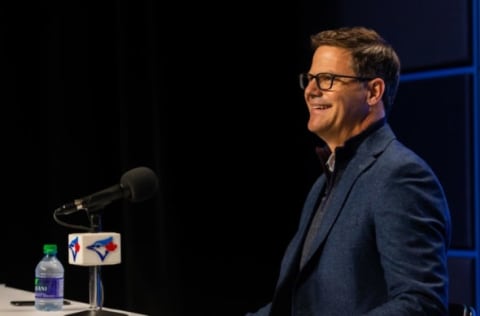
Lack of Imagination
Given we’ve seen some of the best players in the game change hands via trade recently, including young superstar OF Juan Soto and ace Luis Castillo, impact players that could dramatically improve the Blue Jays are available via trade.
For example, Shohei Ohtani could be available via trade from the LA Angels this offseason after expressing frustration with that club after another bad record (73-89) this year, missing the playoffs for an eighth consecutive season. A free agent after next season, Ohtani wouldn’t come cheap, but he solves two key issues: another top-of-the-rotation starting pitcher after Alek Manoah and Kevin Gausman and a left-handed power bat who could improve the balance of the batting order.
Trade rumors are already swirling around Shohei Ohtani, and upon returning to Japan, he criticized the Los Angeles Angels season
— Joon Lee (@joonlee) October 18, 2022
"I have a rather negative impression of the season" https://t.co/nkrd9Tms1L
But does Atkins have the guts or the imagination to make a trade like this happen? Judging by his record to date as the Blue Jays GM, I would say no.
In fact, he blew it at the trade deadline this year by not adding any high-leverage, swing-and-miss arms to the bullpen when pitchers like Raisel Iglesias, Josh Hader, Taylor Rogers, Chris Martin and David Robertson were all clearly available.
Instead, Atkins added Anthony Bass, who hasn’t converted any of his eight save opportunities since 2020, and who allowed three runs on three hits, with no outs after facing just three batters in the top of the eighth inning of the game-two collapse in the ALWC against the Mariners. He’d entered the game with the Jays up 9-5 but imploded.
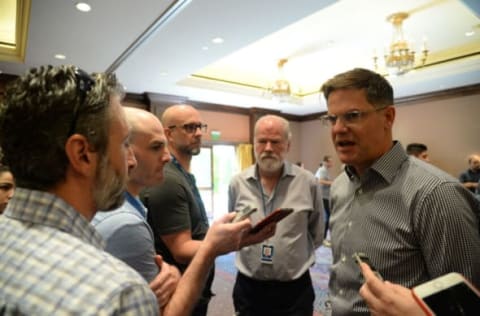
The Farm is Bare
The Jays currently only have two top 100 prospects as per Baseball America’s midseason update: catcher Gabriel Moreno and lefty starter Ricky Tiedemann. They noted:
With the Blue Jays in a competitive window the organization has traded from the farm system heavily in recent seasons.
And when top prospect Moreno graduates full-time to the big club, FanGraphs analysis of potential future value in the farm system would rank the Jays’ system 26th out of 30 teams.
MLB Pipeline ranked it 20th in their 2022 midseason update and noted that “there are questions about how much pitching this group can provide future Toronto staffs.”
Perhaps more worrisome is that their four top draft picks this past June are all now top ten prospects, which suggests the organizational depth is very thin if they can all immediately land in the top ten. They include first-rounder and LHP Brandon Barriera as well as infielders Josh Kasevich, Tucker Toman, and Cade Doughty.
Could that also mean some of the previous top infield prospects like Orelvis Martinez, Leo Jimenez, Otto Lopez and Miguel Hiraldo have taken a step backwards? As per MLB Pipeline, “a deep group of Toronto [infield prospects] has taken a step back, affecting the overall health of the system.”
This is the exact opposite of what Mark Shapiro and Ross Atkins promised Jays fans when they were hired. They talked about the importance of player development and a deep farm system, with waves of prospects being developed to provide sustainable depth for the big league club.
Source: In their 1st & only meeting, new Jays prez Mark Shapiro scolded Alex Anthopolous & staff for trading so many top prospects this yr
— Rick Westhead (@rwesthead) October 29, 2015
Instead, they’ve now traded away four of their first-round draft picks since their first draft in 2016, including T.J. Zeuch, Jordan Groshans, Austin Martin, and Gunnar Hoglund.
As for player development, in seven years of work in Toronto, Ross Atkins has only drafted and signed the following players who made the 26-man playoff roster this year: Bo Bichette, Cavan Biggio, Alek Manoah, Lourdes Gurriel Jr., Alejandro Kirk and Gabriel Moreno. The other homegrown players like Jansen, Romano, Tim Mayza and Vladimir Guerrero Jr., were already signed and with the organization when he arrived. Given how weak the farm system is, the big pronouncements on a sustainable farm system and the emphasis on player development, Ross Atkins bears much of the blame for this as well.
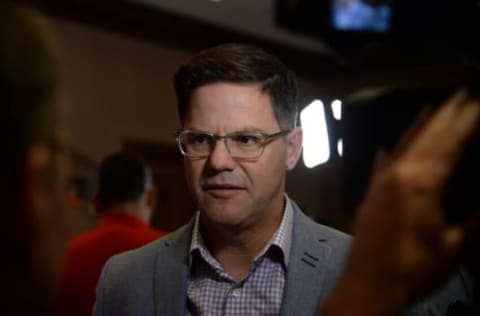
Poor Roster Management
Despite a 26-man payroll that will approach $185 million in 2023 as per RosterResource, Ross Atkins has not signed a single young homegrown star to a long-term contract extension to buy out their remaining arbitration eligibility and some of their potential free agent years. Guerrero Jr., Bichette, Manoah, Kirk and Romano are all under team control through their arbitration years, but that’s it.
Despite that, the competitive balance (“luxury”) tax payroll should be well over $200 million in 2023. That implies a luxury tax payroll squeeze given the threshold is $233 million next year… likely without any long-term contract extensions?
Compare that again to Braves GM Alex Anthopoulos, who has signed a young homegrown core of CF Ronald Acuña Jr., 2B Ozzie Albies, 3B Austin Riley, OF Michael Harris II and starter Spencer Strider all to long-term contract extensions. Along with an extension to 1B Matt Olson, who was acquired via trade from Oakland, MLBTR notes, “All six of those players are now under club control through at least the 2027 season, giving the Braves a level of continuity and cost certainty that is unparalleled throughout the league.”
The Blue jays under Atkins have made aggressive contract extension offers to Randal Grichuk and Jose Berríos, both acquired via trade. They’ve made big free-agent signing splashes with Hyun Jun Ryu, George Springer, and Kevin Gausman.
But they haven’t got a level of continuity and cost certainty yet like the Braves, with only current Jays Springer, Gausman and Berríos signed through 2026, and only Manoah, Kirk and Espinal still under team control via arbitration through that season.
Blue Jays have not signed any core player to a long-term extension
Further, the 40-man roster management has been exceedingly poor. Examples of this include acquiring players out of minor league options (or running out), including Derek Fisher in 2019 and Mitch White in 2022. If they don’t stick with the big league club, they have to be passed through waivers before they can be demoted.
Worse still, Atkins has added additional cost via trade, like the $4 million incentive bonus Merrifield earned for 2023 by staying off the IL for more than 110 days in 2022, not to mention an $18 million mutual option in 2024.
He’s also made some terrible free agent signings, including Kendrys Morales ($33 million), Jaime García ($10 million), Tanner Roark ($24 million), Kirby Yates ($5.5 million), Shun Yamaguchi ($6.35 million), Tyler Chatwood ($3 million), and a disastrous and nonsensical 3-year, $36 million offer to Yusei Kikuchi, who pitched to a 5.19 ERA this year, in line with his career average of 5.02.
That would have been the second-worst ERA for a starter in MLB after Jose Berríos at 5.23, but Kikuchi only pitched 100.2 innings, so he wasn’t a qualified starter. Whether he can improve in 2023 and 2024 remains to be seen.
And despite all the talk from Ross Atkins of the need for swing-and-miss arms in the bullpen, he’s let lots of hard-throwing arms just leave via waivers, free agency and trades. That list includes 100mph arms in Bryan Baker and Jason Adam, who combined for a 3.8 bWAR this year, as well as two 6’5” flamethrowing prospects in Nick Frasso and Moises Brito, both moved to the Dodgers to acquire Mitch White at this year’s trade deadline. Instead, he’s kept Julian Merryweather and Nate Pearson in the organization, despite constant injuries and poor results at the MLB level.
Nick Frasso made his Dodgers organization debut with the Loons. He was acquired from the Blue Jays in the Mitch White deal.
— Blake Harris (@BlakeHarrisTBLA) August 11, 2022
Tossed three scoreless innings with four strikeouts
Baseball America ranks him as LA's No. 16 prospect. Only 45 career innings, but has Top 100 potential. pic.twitter.com/qNcKeIb6IZ
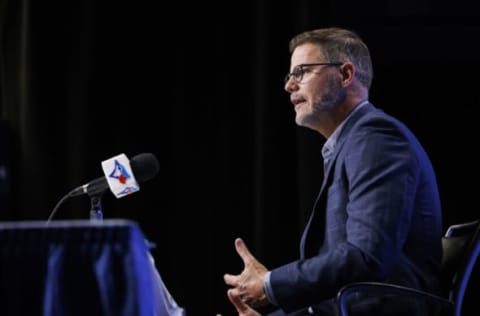
Should the Blue Jays replace Ross Atkins?
With president Mark Shapiro perhaps more focused on the Rogers Centre renovations and longer-term plans to redevelop the 12.7-acre site around the stadium, GM Ross Atkins and his analytics group may be making more of the day-to-day decisions on the baseball operations side.
That may not be a good thing given a seven-year cumulative record of MLB talent downgrades via trades, a looming luxury tax payroll squeeze, poor roster and talent management, and a farm system that is ranked bottom third in the league.
While it’s extremely unlikely that Ross Atkins will be fired this offseason, that doesn’t remove the lingering concern that perhaps it would be best for this organization if he was fired.
After seven seasons here in the GM role, he’s certainly next on the firing line should the Blue Jays regress and miss the playoffs, or not go deep in the postseason again next year. The team is in “win now” mode, and 2023 will be year three of their current competitive window. His moves will be closely scrutinized this offseason given the clearly identified needs that must be addressed to improve this club.
dark. Next. Blue Jays currently featured on the AL/NL Championship Series rosters
Talk is cheap, and the time for action on better swing and miss pitching and hitting balance is here. As Steve Simmons of the Toronto Sun wrote about Ross Atkins after Charlie Montoyo was fired, “Now he’s on the hot seat… These are Atkins’ players (and by extension Mark Shapiro’s players). This is their team.”
Your move, Ross.